Thursday, August 11, 2022: Kautokeino
Info:
Kautokeino is one of the centres of Sami culture in Norway. The Sami University, a Sami highschool, a Sami Theatre and the Norwegian-Sami-Parliament are there. About 1,500 people live in this town.
The landscape is characterized by a lot of rivers. Corresponding to the rivers is the number of mosquitos. A local told me that there’s a village nearby, situated at a river, where there are so many mosquitos that you can’t even breath without a net for three weeks every summer.
Juhl’s Silver Gallery is nearby on a hill. Sami arts and crafts are exhibited there.
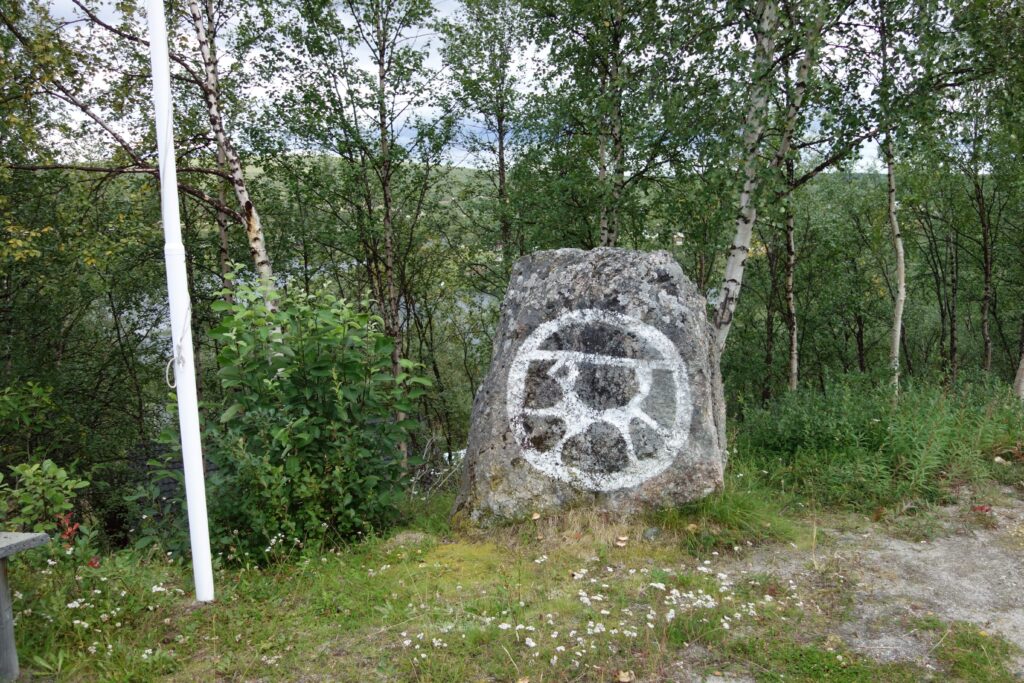
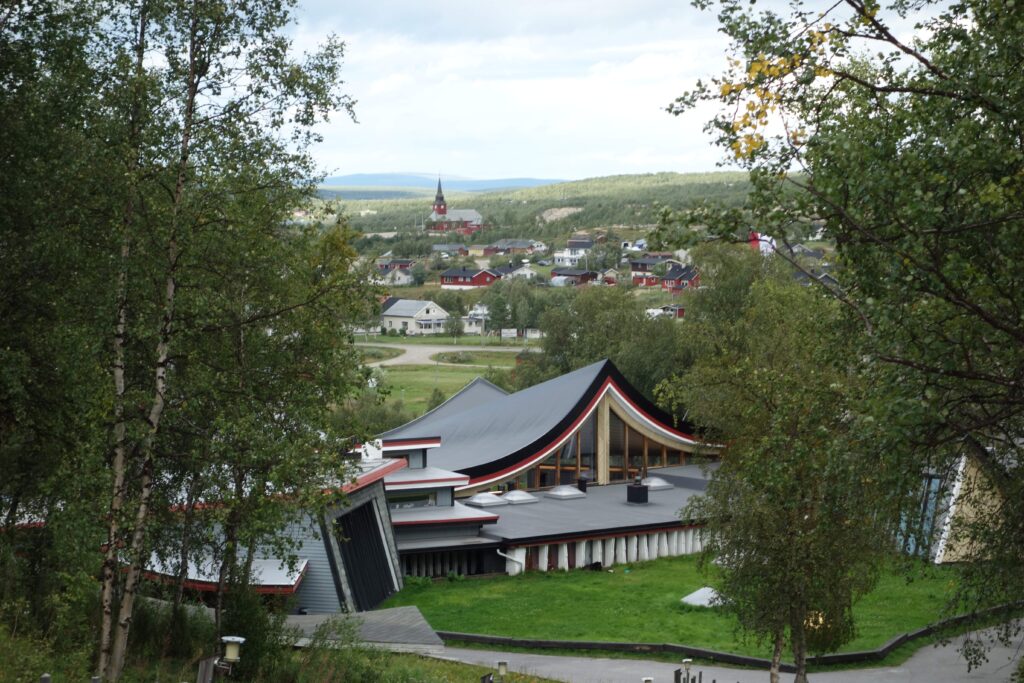
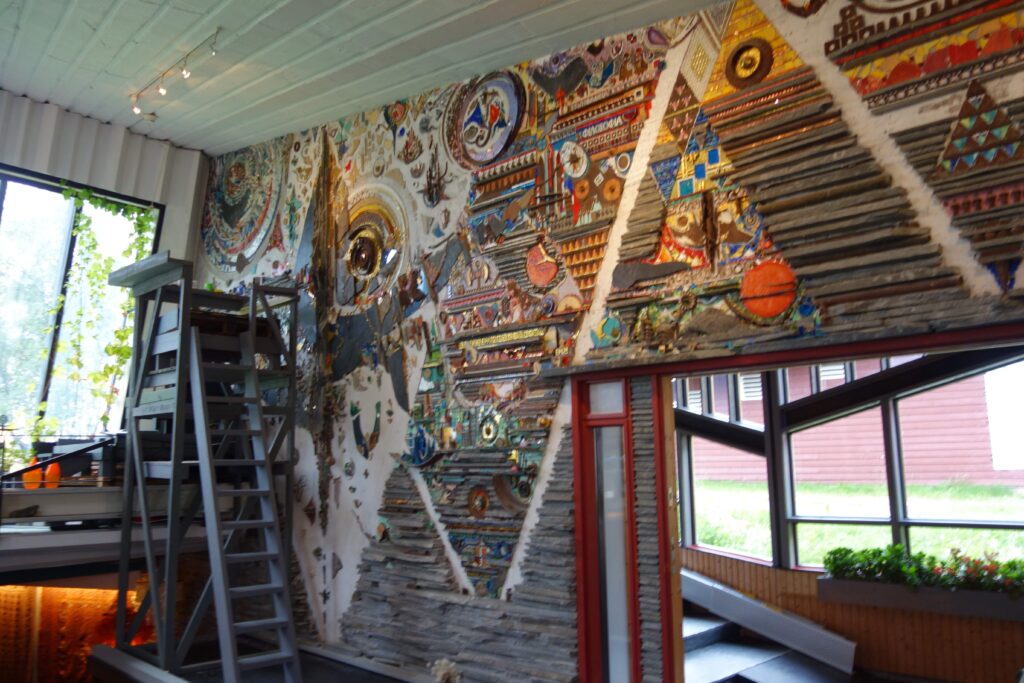
My opinion:
There are places where you arrive and immediately feel comfortable without knowing why. That’s what happened to me in Kautokeino.
When checking in at the Arctic campground I was invited to the tea ceremony in the evening, which I gladly accepted. I am very interested in Sami culture and during my trip I visited (almost) every Sami museum I passed. Talking with the Sami family was one of the special experiences of my stay in Scandinavia.
Juhl’s Silver Gallery was a worthwhile goal as well, not only because of the great architecture of the building but also because auf die displayed items. Talking about architecture: The public buildings in Kautokeino are just a feast for the eyes.
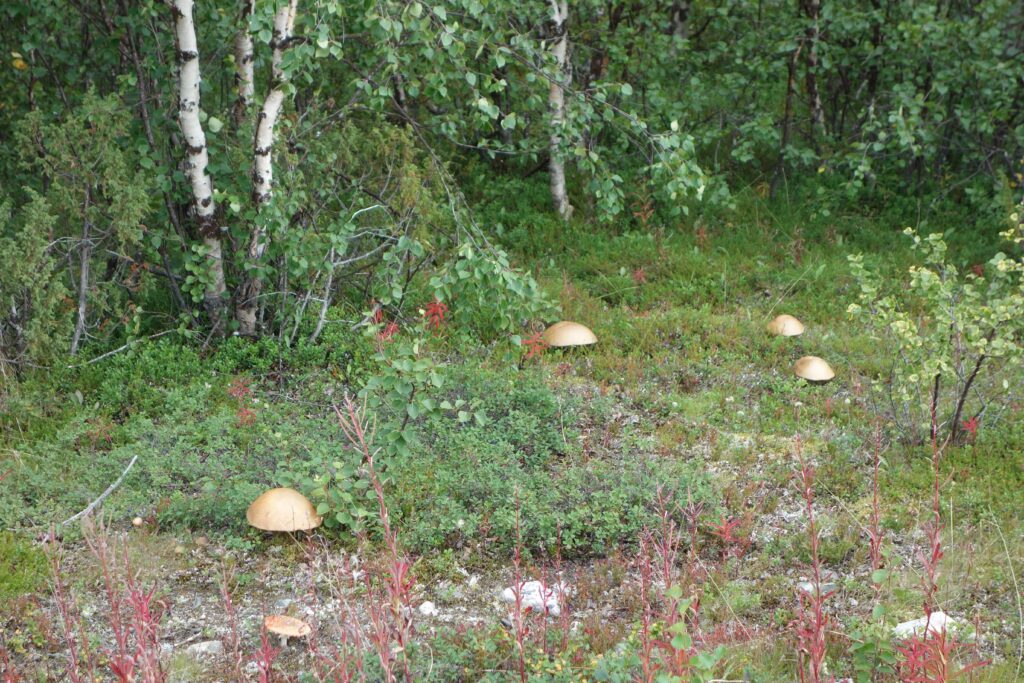
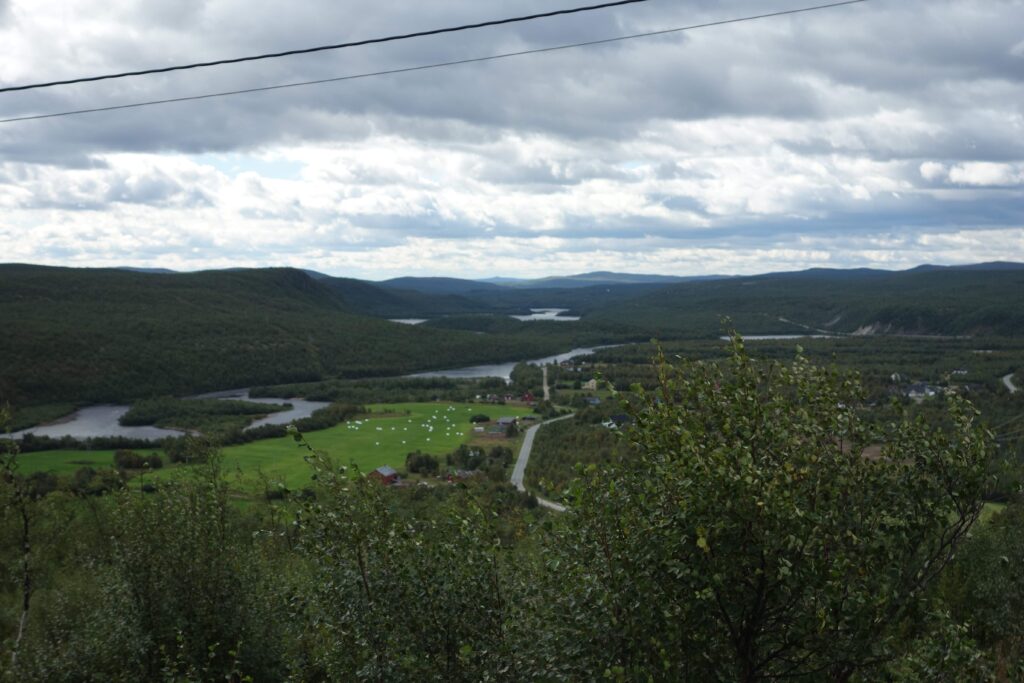
Diary:
From Gaellivare we went through an incredibly beautiful landscape in Sweden and Finland to Kautokeino in Norway. Still on E 45, which ends in Alta. Then checking in at the Arctic Campground, the young man at the counter asked me to come to the Lavvu at 7 p.m. and bring a cup with me. A lavvu is the kind of tent in which Sami people live. The one at the campground was larger than usual because it was not used for living but for entertaining guests.
On the campground I saw a man chopping wood and hoisting a flag, wearing traditional Sami clothes.
I asked the locals what they would recommend me to do in the afternoon, and according to their advice I went to Juhl’s Silver Gallery, where Sami arts are exhibited in a building which is absolutely sensational. I even bought something, not for myself, but for my son – in case he likes it. If not, I’ll keep it. But I am quite sure, he will like it.
In Kautokeino I noticed a number of buildings which were architectural masterpieces. They are in the process of building a school centre for which we Austrians can do nothing but envy them.
And when it comes to Sami museums, they are the most beautiful and largest buildings in many villages. And the libraries. This shows how important culture, books and education are in Scandinavia. (If you compare buildings in Austria for their beauty, schools are at the end of the list.)
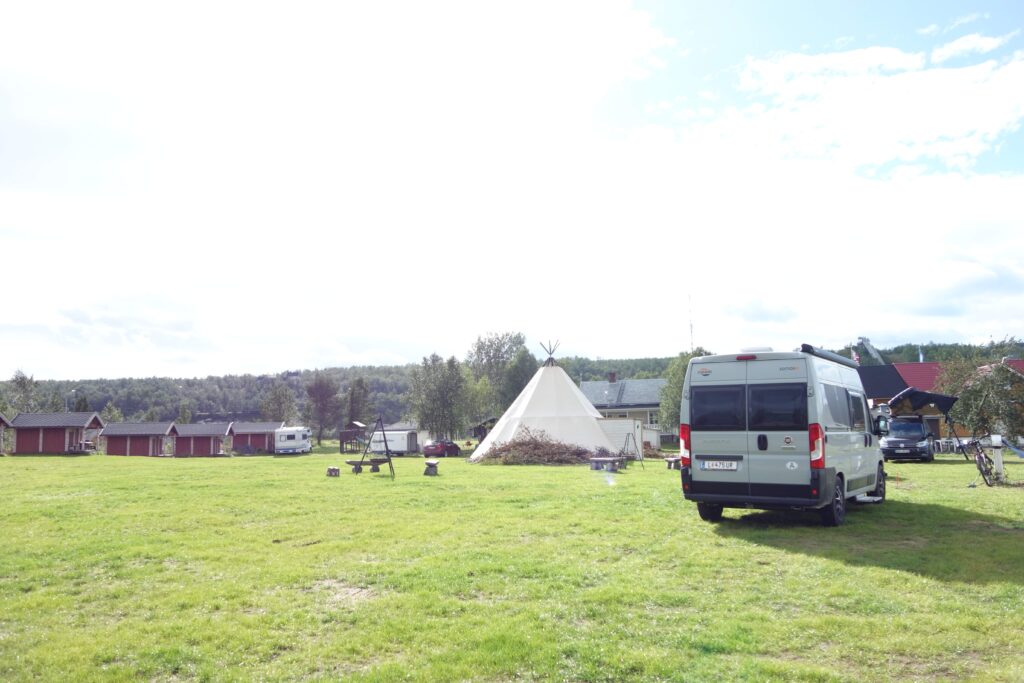
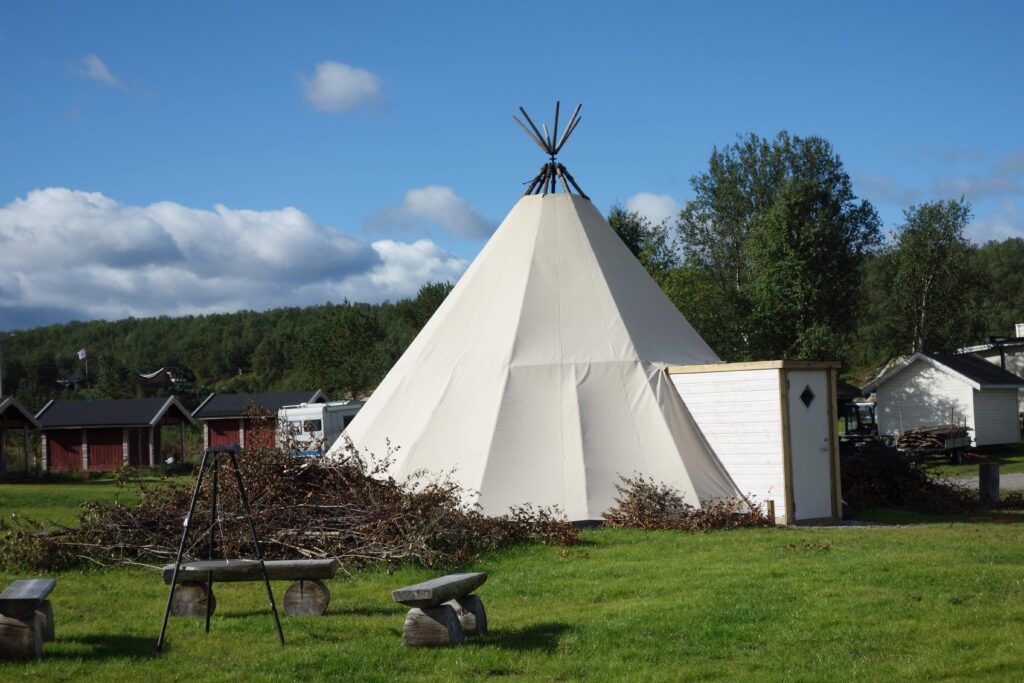
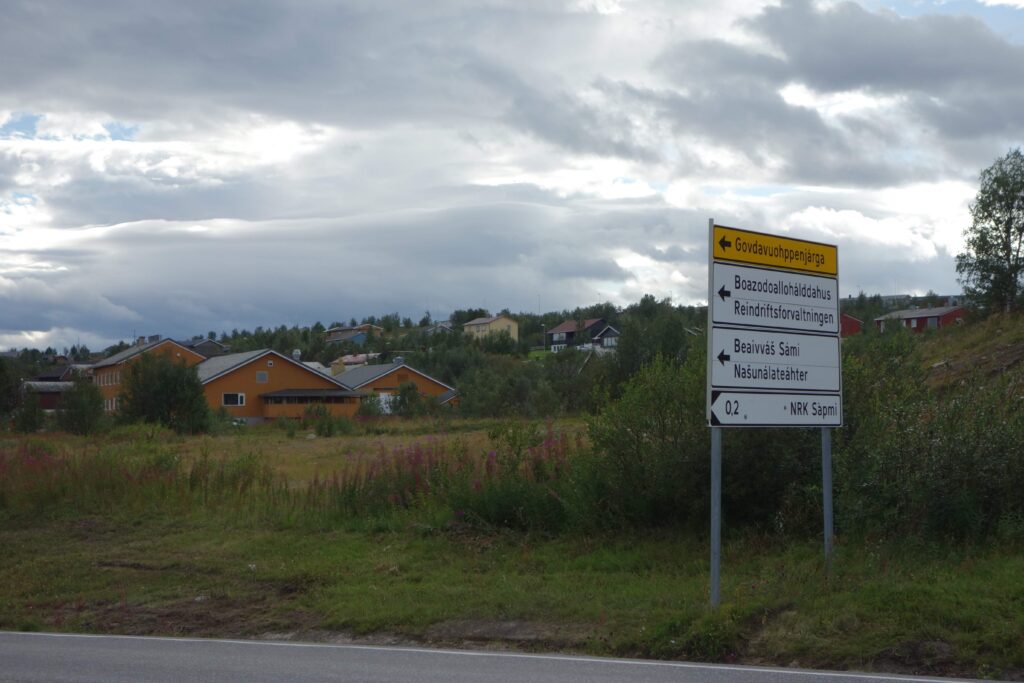
Shortly after seven in the evening I entered the lavvu. A fire was burning in the centre, around which there were benches covered with reindeer furs. The young man whom I had watched chopping wook in the afternoon, was sitting on the floor in his traditional Sami clothes. I said hello and that I had been told to come here with a coffee cup. He poured hot coffee out of a huge black iron coffee pot which was standing at the edge of the fireplace. Then he gave me the advice that it’s better to take a reindeer fur from the bench and sit on the floor like him, because the smoke goes up, and when you sit on the floor, you won’t smell that much afterwards. I did what he suggested. It’s incredible how soft such a fur is! And warm!
There was really quite a lot of smoke in the lavvu. In addition to that, the man used branches which still had leaves on them. I found it interesting how he put the branches on a heap. Being the daughter of a man who had worked as a lumberjack in the Canadian forests, I have chopped my share of wook myself, and I have known from the cradle (or shortly afterwards) how to make a fire with any kind of wood in any kind of wind. The man just put the branches on the ground, all in the same direction, and they burned (nevertheless). Maybe because we were in a tent and there was no wind. And there certainly would have been no smoke it he had done it differently.
After some time other people with or without coffee cups entered the tent, among them a man from Augsburg in Germany, who was going to the Nordkapp by bike. We were an international group, coming from Norway, Sweden, the Netherlands, Switzerland, Germany and me from Austria, and we were talking English. Then the 82-year-old Sami-grandmother turned up in her traditional costume of darkblue cloth with colourful ribbons. It was she who had founded this campground in 1966 and who still enjoyed sitting at the fire in the lavvu, which she did every evening. She lit a cigarette and said something in her Sami language which the man translated as the fireplace making a nice large ashtray. What an interesting personality! The young Sami told us that he was from the north of Sweden, and his woman was the grand-daughter of the lady, and this is why he lived here. The three blond kids who stopped by every now and then, throwing some more wood into the fire, were his. In addition there was a dog, a young husky of a special breed which is used for herding reindeer.
Someone asked him, if he himself owned reindeer, and he agreed. He assumed that his animals were somewhere in the area of Tromsoe at the moment. His father and his brother kept reindeer for a living, so they also looked after his. Reindeer follow the rivers, therefore he knew where to find them in which season. They all have marks on their ears, showing to whom they belong. A reindeer is worth approximately 5000 Norwegian crowns, which are about 500 Euros.
Being asked by the lady from the Netherlands who many reindeer he had got, he said, in Norway that’s like asking how much money someone has, and he smiled. Of course, he didn’t answer the question.
But this was the only question he did not answer. He never tired of telling us about the life of the Sami, hinting that in former times the governments spent a lot of money to destroy their culture, whereas nowadays they spend a lot of money to have their culture not only survive but revive it again. To be a Sami, is something special, a question of identity. You are allowed to call yourself a Sami, when your grandmother still spoke one of the nine Sami languages.
He himself spoke Sami, and he often worked for Swedish and Norwegian TV stations when it came to Sami-topics on TV. In passing the mentioned that he owned a film production company here in Kautokeino and had also worked for a Netflix series.
For me it was fascinating how he went back and forth between different cultures and, actually, different worlds. Yes, he missed life in the lavvu, he had lived in a lavvu till he was nine years old. On the other hand, a house with electricity also has some advantages. Sitting at the fire in the evening and preparing the traditional coffee was a very important ritual for him. Coffee in the evening plays an important role for Sami.
His English accent sounded quite American for me, so I asked him, and he said, that he had studied in New York. Then he got up and went outside to chop some more wood.
A man from Germany who had just come back from Nordkapp told me, that there had been something like a storm of the century and that driving had been extremely dangerous. But now everything should be better. I had a look at my weather app, and it said: eight hours of sunshine at Nordkapp the next day.
We had fun in the lavvu. And we sat the the fire for hours.
Now I am smoked. This means, I will last ten years longer, at least. Und this with my laundry freshly washed and dried twice … Nevertheless I put on the same jeans again the next day.
In the morning the sun rose in Kautokeino at 3:17 a.m. I am glad that Annie Way has got really good blinds.
